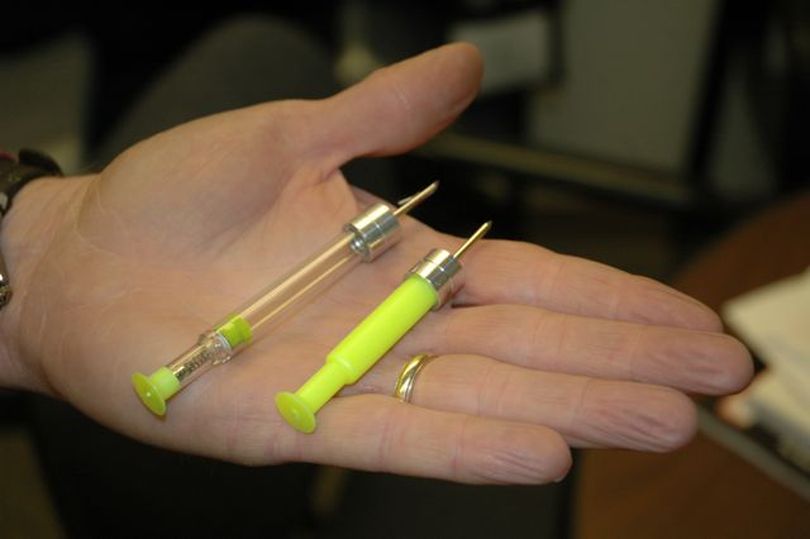

#TRANQUILIZER DART FULL#
The needle may be plain or collared, with a barb-like ring to improve retention of the needle and syringe to assure that the full dose is administered. The dart is propelled from the gun by compressed gas, and it is stabilized in flight by a tailpiece consisting of a tuft of fibrous material. 50 caliber (12.7 mm), is a ballistic syringe loaded with a solution and tipped with a hypodermic needle.

In the second half of the 1980s, the standard tranquillizer gun in the USSR was a single-shot IZh-18M shotgun (a dart with a dose of tranquillizer was fired with a blank cartridge). In the mid-1970s, "flying dart" for 12 gauge shotguns and experimental cartridges for immobilization of wild animals for the SPSh-44 pistol were made and tested. In the first half of the 1970s, experimental 9×53mmR cartridges for immobilization of wild animals for 9mm " Los" bolt-action carbine and "flying dart" for 16 gauge shotguns were made and tested. Since 1967, hollow bullets with tranquillizers for immobilization of wild animals began to be used in the USSR. Tony Pooley and Toni Harthoorn discovered that various species, despite being of roughly equal size (for example, the rhinoceros and the buffalo), needed very different doses and spectra of drugs to safely immobilize them. In the early 1960s, a team in Kenya headed by Drs. The first modern remote drug-delivery system was invented by scientists at the University of Georgia in the 1950s, and was the direct predecessor to the Cap-Chur equipment used worldwide for decades. To that end, Murdoch went on to develop a range of rifles, darts, and pistols. While working with colleagues to study populations of deer and wild goats introduced to New Zealand, he considered that the animals would be easier to catch, examine, and release if a dose of tranquillizer could be administered by projection from afar. The modern dart gun was invented in the 1950s by New Zealander Colin Murdoch.


 0 kommentar(er)
0 kommentar(er)
